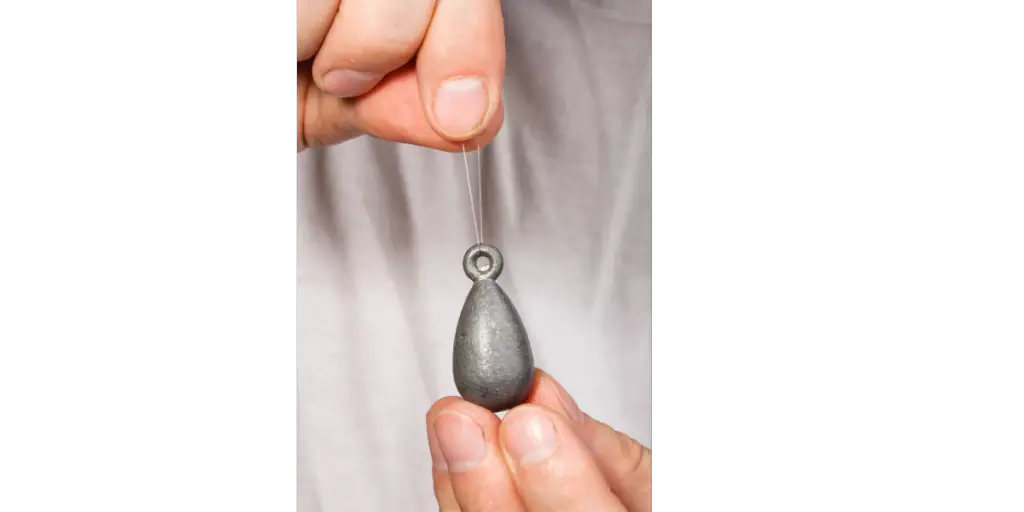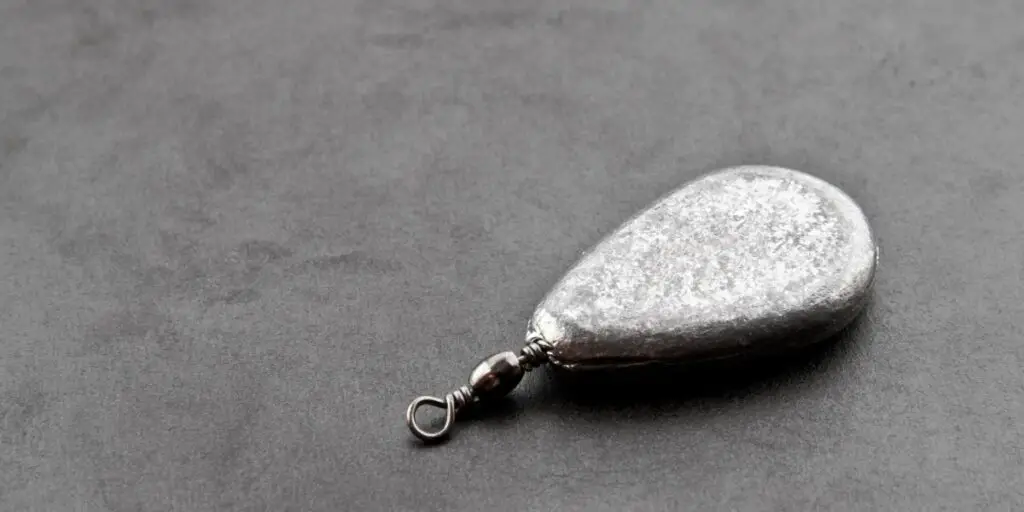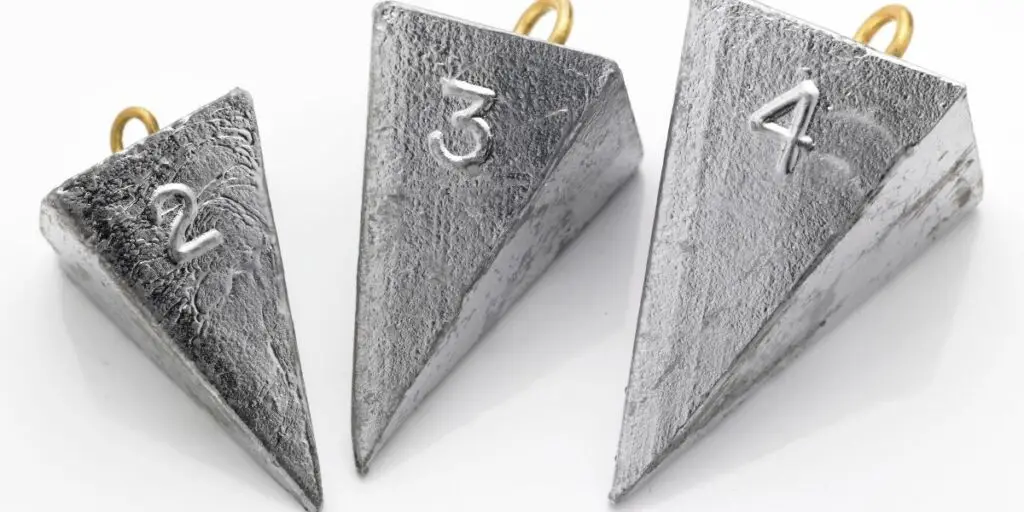
Planning your next river fishing trip? If so, you are probably asking yourself the size of the sinker you need, as it has a significant impact on the success of your expedition.
River fishing sinkers vary in size and shape, and each has its ideal use case.
If you are serious about fishing, certain equipment are a must-have – line and hooks, baits, fish finders, and sinkers. Surprisingly, many people tend to overlook sinkers.
Generally, sinkers for river fishing can weigh as little as ⅛ oz. or as much as 14 lbs., depending on the type of fish you are targeting.
Traditionally made of lead, sinkers are pieces of metal that allow you to lower the lures or baits to the desired level so that you can attract and capture fish.
However, some jurisdictions have outlawed the use of lead sinkers because of its adverse health effects.
Instead, they are encouraging fishermen to use safer metals like brass, steel, tin, tungsten, etc.
Besides lowering your fishing line to the depth where fish are found, sinkers provide weight that allows you to propel the rig farther when casting.
It also increases stability, enabling you to fish comfortably in all conditions, whether smooth or harsh.
That said, selecting the right-sized sinker can be challenging, especially if you are new to river fishing.
Read on to discover how to make the right purchase before your next fishing expedition.
Table of Contents
Types of Sinkers
The first step to identifying the right-sized sinker is knowing the different types available to you.
Some common options include egg sinkers, flat sinkers, pyramid sinkers, and split-shot sinkers.
Egg Sinkers
As the name suggests, these sinkers resemble eggs.
They have a hole through the middle to which you attach the line, and their weight ranges between ¼ and 1oz.

Because it is an excellent all-rounder, this type of sinker is compatible with all types of rigs and captures several types of fish.
The one-ounce (28g) egg sinker is ideal for pulling along rivers with muddy and sandy beds since it stirs up silt and debris to attract fish towards the bait in its trail.
As the weight hits the bottom, the egg shape ensures that your fishing line remains in contact with it better than other kinds of sinkers.
Flat Sinkers
For those who love stationary fishing, flat sinkers (also known as ‘no roll’ sinkers) are the best bet.
Although they have holes through them, they lay down flat on the river bed, mostly because they weigh up to 5oz.

This position allows them to resist rolling and tumbling, meaning that you can fish comfortably in heavy current.
Most fishermen like rigging no roll sinkers with swivels and a leader, akin to walking sinkers and Carolina egg-shaped sinkers.
While this set up often works, the best way to use flat sinkers is when doing stationary fishing.
Pyramid Sinkers
Like pyramids, these sinkers have four faces, a base, and a pointed end at the apex.
The base has a metal loop that allows you to attach your fishing line.

For shallow river waters, use 0.125 oz. sinker. If the depth exceeds 20 feet, increase the weight to 0.5 oz.
Pyramid sinkers are perfect when you want to tether your catch to a particular spot.
Their pointed end allows them to dig through muddy and sandy bottoms effortlessly while attracting fish to the bait.
However, you might encounter difficulties if the base is rocky or contains reefs.
A popular use case for pyramid sinkers is when targeting larger species in fast-moving rivers.
Here, the fishermen use smaller fish as bait. For instance, they might attach a sardine to the sinker, and it will hold it in place until the larger fish gets lured into the trap.
Split-shot Sinkers
Split-shot sinkers are renowned for their versatility, despite their small size (the biggest weighs a measly 0.08 oz.).
The variants with ‘wings’ are especially popular among fishermen because they are easy to use, reusable, and more importantly, they can be casted at higher speeds compared to other weights.

Versatility, as mentioned above, is the standout advantage of split-shot sinkers.
You can attach a single 0.02 oz. unit (for shallow waters) or several pieces to your fishing line.
If your sinker is not going deep enough, you can add more weight by attaching several 0.05 oz. split-shots.
Even better, you can attach this sinker directly to the bait.
In the past, shotgun and BB gun shots were used to make split-shot sinkers, with an incision made through the middle to make them suitable for fishing.
Nowadays, these weights are specially designed for fishing. On the downside, they are made of lead, which is potentially hazardous.
Other Types of Sinkers
The options mentioned above are the most used weights. Other lesser-known types of sinkers include:
- Bank sinkers: these are long and rounded with a hole for attaching the line at the top, and a minimum weight of ⅜ oz. They are useful for drop shooting and river fishing.
- Pencil sinkers: these look like pencils with an attachment loop at the top, and weigh up to 2oz. Their design is intended to avoid snags in rivers. You can use two concurrently.
- Worm weights: also known as bullet sinkers, these are cone-shaped pieces of lead with a hole through the middle. They are useful for freshwater river fishing using soft baits, and weigh as little as 0.25 oz.
- Rubber-core sinkers: these look and function like split-shot sinkers, with the difference being that they are heavier (up to 0.5 oz.) and have a rubber core.
Check out a good range of fishing sinkers on Amazon.com here!
How to Get Started
It is advisable to start small, which is why we recommend getting split-shot sinkers when beginning.
This is because they are easy to use and work well in most fishing situations.
Additionally, it is wise to invest in flat sinkers, mostly because they are the best option for stationary fishing.
With them in your possession, you can relax as you wait for fish to get lured into your trap.
Avoid prioritising egg and pyramid sinkers if you are a novice. Though useful, these weights only come in handy in special situations.
Regardless of what you choose, always ensure that you have a range of weights and different types of sinkers.
This makes you prepared for various fishing situations.
Conclusion
The most important thing is the way you present the bait, not the type of sinker you use.
For this reason, you should consider the sinker as a tool that helps you lure your target into a trap so that you catch them.
While it isn’t entirely impossible to catch fish without sinkers, it is a tough ask if you are treading fast-moving rivers with sandy or muddy bottoms.
Use the information provided above to help you choose the right sinker for your situation.
Lastly, always use the smallest sinker possible.
When the sinker is too big, it can make the bait look unnatural from the fish’s perspective, making it run away.